Blog
Famous And Legendary Turkish Carpets and Rugs (Kilim)
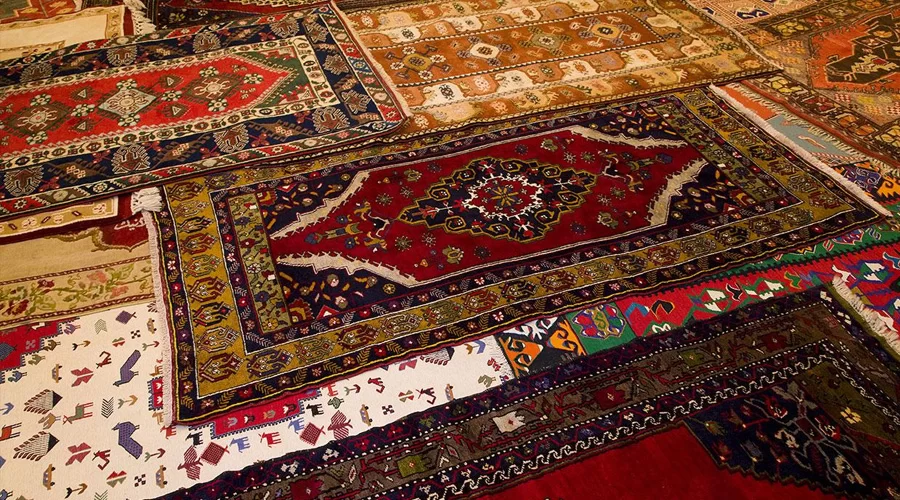
You’ve heard of the fame of Turkish carpets and Kilim (Turkish Rug) but want to know more details? We have prepared this detailed Turkish Carpet and Turkish Rug article for you. Let’s take a look at the Turkish carpets, which have a very important role in Turkish culture.
The Art Of Turkish Carpet and Rug Weaving And Turks
The Turks’ acquaintance with carpets and their introduction to the world is based on Turkish lifestyle and Turkish values. Turkmen communities, who lead a nomadic lifestyle and have a certain tradition, weaved carpets and rugs from those wool yarns by spinning the wool and dyeing it with the roots of the plants in order to protect the area they live in from dirt and filth, sit on a clean floor and stay warm. They laid them out on their seats and hung them on their walls. At the same time, this was the importance and value given to people, living space, and cleanliness.
In addition, for centuries, the Turks expressed their love for the Turkish nation and all their feelings in the symbolic language of colors and embroidery. The Turks, who are the owners of carpet and rug weaving, were also very successful in the ancient tradition of ‘natural dyeing’, which is considered an indispensable part of these works of art in Anatolia. The Turks were very familiar with weaving and fabric materials, as they lived in the regions dominating the Silk Road. Turkish Carpets and Turkish kilims adorned with motifs intertwined with nature and unique patterns have emerged due to both these reasons, artistic inclination and needs.
History Of Turkish Carpets and Rugs
Turkish Carpets have always had an important role in Turkish culture. The carpet was first introduced to the Middle East and the Islamic world by the Turks, showing great development in the region where the Turkish communities lived in Central Asia. Turkish Carpets first developed in Central Asia because the main economic resource of the Turks was animal husbandry. For this reason, the raw material of the carpet was generally sheep fleece.
It has been proven with concrete evidence that the carpet and rug, which has been needed since the beginning of human history, was woven by the Turks for the first time. This fact was only discovered in 1948, and the “Pazyryk Carpet” (Pazırık Carpet in Turkish) became the world’s first known carpet. The history of the carpet, which was found by Russian Archaeologist Sergei Rudenko in 1948, dates back to the 5th century BC. The Pazyryk Carpet, which has been proven to belong to the Central Asian Turks, has been presented in the Petersburg Hermitage Museum, Russia since 1950.
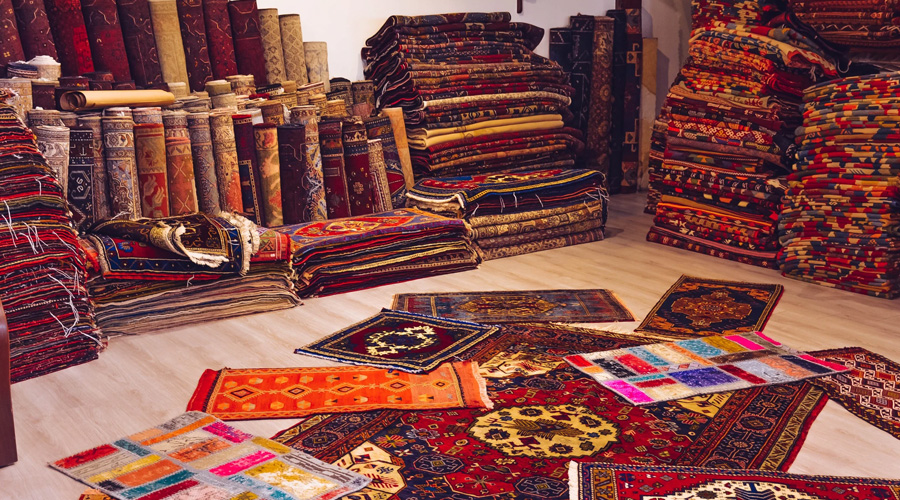
• The Oldest Carpet “Pazyryk”
The oldest known carpet is the Pazyryk Carpet, which was found in the Central Asian Pazyryk Burials (Pazirik Kurganı in Turkish). The carpet reflects both the style and technique of Central Asian art in the best way and it is very finely woven. The fact that the Pazyryk Carpet is made with the Turkish knot technique (Gördes knot) shows that the traditional technique of Turkish carpet art is based on a very old past. In addition, the earliest example of the octagonal Turkmen rose embroidery seen on Turkmen carpets is seen on the Pazyryk Carpet.
Various animal fight scenes and animal figures on Central Asian Turkish carpets show the life and beliefs of the society at that time. The Turkish carpet and rug were also made before the Central Asian Turks, but they are applique carpets and do not have the knot technique. For this reason, Pazyryk Carpet is important.
• Carpet Weaving In The Ottoman Empire
The Ottoman Empire continued the Seljuk tradition in carpet weaving. Carpets of the 15th-16th century Early Ottoman Period were divided in four different groups. In the first and second groups of the early Ottoman period carpets (Holbein Carpets), the floor is divided into small squares, with octagons placed inside the squares and rhombus-shaped motifs arranged in shifted axes between them. These carpets, which are accepted to be woven around Uşak, were woven with wool material and Turkish knot technique.
In the third and fourth group groups, the floor is divided into two, three, or four equal squares. Geometric motifs consisting of octagons are placed on each of the squares. These include eight-pointed star and plant patterns, stylized animals, and fight scenes. Turkish Carpets and Rugs are made with materials such as silk wool and gold. Vivid and bright colors and rich motifs are dominant
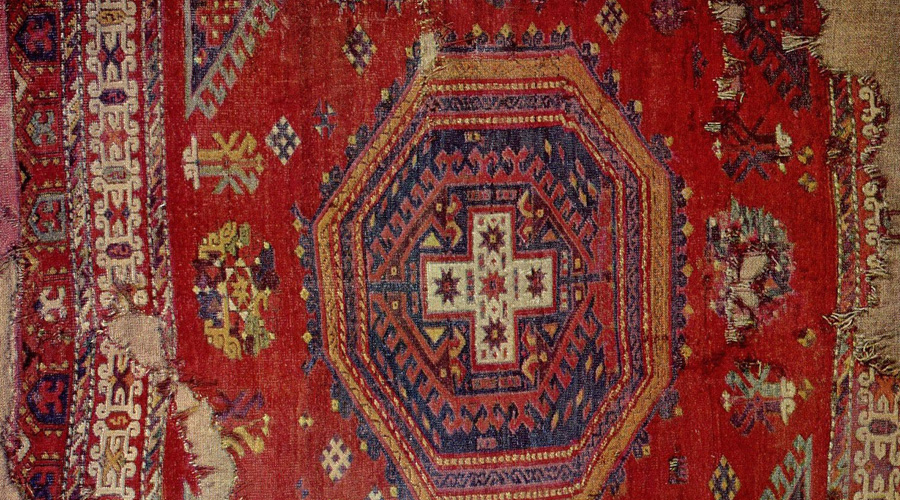
Types of Traditional Anatolian Carpets
It is known that the Turks are one of the first countries that come to mind in carpet weaving. Carpet weaving in Anatolian civilizations developed around Konya, Ankara, and Kayseri. Although Turkish carpets were seen under the influence of Turkish culture from the 13th to the 15th centuries, Persian influences emerged in the art of carpets in the 15th century. As a result of this effect, standards equivalent to Persian carpets have been achieved in terms of quality, style, and techniques used. Turkish carpets generally use materials such as wool, cotton, and silk. Each of the materials used was tied with the Turkish knot technique or also known as “Turk baff”. Because of this technique, geometric motifs were usually made on the ground in Turkish carpets.
• Holbein Carpets
While carpets of the Anatolian Seljuk period are seen in the 13th century, carpets from the Ottoman period are seen from the 15th century. One of the carpet types known in the Ottoman period is the Holbein carpet. Holbein carpets are named after the German painter Hans Holbein. These carpets, known as the Ottoman-Turkish carpets of the early period, are named this way because they are mostly seen in the paintings of this artist. In fact, although they were painted by other painters in history and before Holbein, these types of carpets were still included in the literature with this naming. There are 4 types of Holbein carpets belonging to the Ottomans. We may list them as follows;
Type 1 Small Sampled Holbein Carpet: In this first type, the floor is divided into small squares. The middle is designed by combining squares filled with octagonal patterns and quarter lozenge patterns from the corner of each square. They are also known for their similarities with Seljuk carpets.
Type 2 Holbein Carpet or Lotto Carpet: This type of carpet is similar to the first type in terms of patterns and appearance. The reason why it is called a lotto carpet is that the painter Holbein never painted these carpets. Type 2 carpets were painted by the Italian painter Lorenzo Lotto. The most important difference from the first type is that it has plant motifs.
Type 3 Large Sampled Holbein Carpet: Type 3 carpets have squares or rectangular patterns of equal size, filled with octagons. These geometric motifs are stacked on top of each other. The number of these geometric motifs throughout the carpet is at least two and at most four, and this type of carpet has a very plain appearance.
Type 4 Large Sampled Holbein Carpet: Type 4 carpets are very similar to type 3 carpets in terms of pattern. In addition to the patterns on the 3rd type of carpets, smaller octagonal motifs were added to this type of carpet. These carpets are also divided into two groups: Medallion and star carpets. Carpets with medallions can be up to 10 meters long, while carpets with stars are up to 4 meters long.
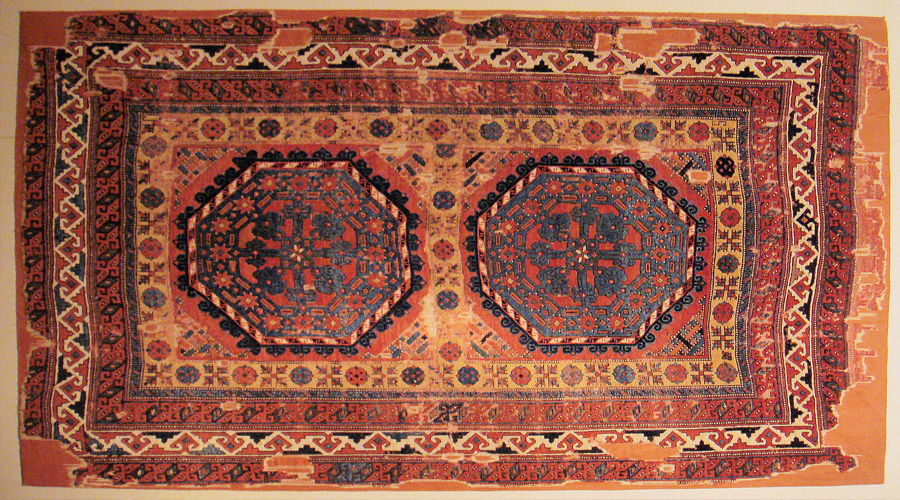
• Usak Carpets
Uşak and its region became the creator of the 15th century early Ottoman period carpets and the carpet weaving center of the Ottoman period. As a result of the capitulations that started in the country in the 1500s, the ambassadors who came to the country were given the right to trade within the Ottoman borders. Thus, Turkish carpets show themselves abroad. While distinguished families in Europe have their paintings painted by famous painters, they use Uşak carpets as decorations on the wall, floor, and table. In addition, during the reign of Suleiman the Magnificent, Uşak carpets gained great importance. At that time, weaving masters brought from Azerbaijan started to weave carpets unique to Uşak with new styles. Anatolian muftis were appointed so that the carpets would not lose their properties and weaving continued under control. The patterns were designed by muralists and ornament artists and the carpets were named “palace carpets”. Spreading from Ottoman palaces to European castles, from mosques to churches, the Usak carpet is not just a carpet but a legend that is a symbol of respectability.

• Antique Isparta Carpet
Isparta carpets have an old history. There is an old commercial weaving tradition in Isparta and its surroundings, which has hosted a very important Turkmen population since the 12th century, by weaving famous Turkmen carpets and exporting them to neighboring countries. Local and traditional Isparta carpet making, which was continued by the Turkmens living in and around Isparta and tribes such as Hamitoğulları, Melli, Sarıkaralı, Sarıkeçili, Karakoyunlu until the end of the 19th century, started from İzmir and extended to the most remote villages in Manisa, Kula, Uşak, and Isparta.
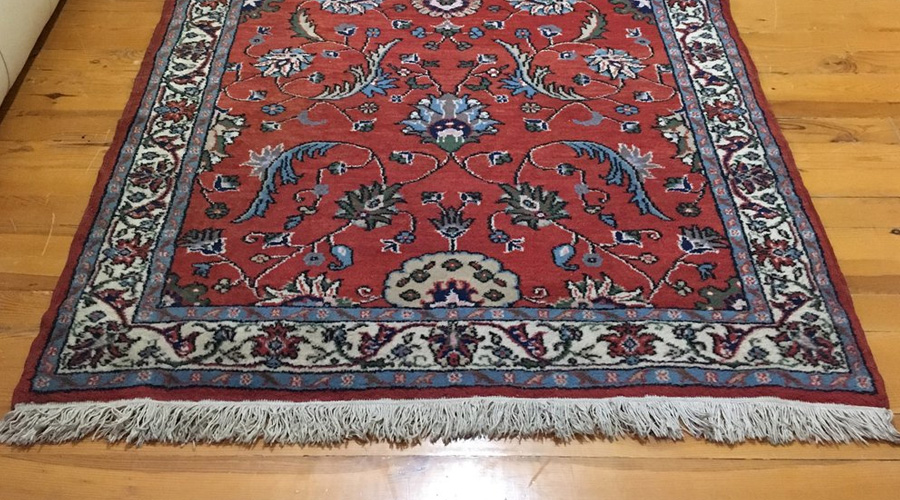
Motifs on Turkish Carpets
The motifs in Turkish carpets are the symbolic equivalent of the event or object that the weaver designed or intends to convey. As in other handicrafts, motifs also function as an expression of emotions with symbols.
Examples of Motifs Used in Turkish Carpets
- The Motif “Elibelinde”
The motif “elibelinde” is the symbol of femininity. It symbolizes not only maternity and fertility but also luck, fertility, fortune, happiness, and joy. Early humans worshiped mother goddesses. Because the male’s biological role in reproduction was not understood, they only saw females giving birth to human offspring. The elibelinde motif used in today’s weavings, which is a continuation of the cult of the mother goddess, is proof of the fact that the belief about the mother goddess has survived to the present day as a cultural heritage.
- The Motif “Locust”
Ram’s horn motif, which is a symbol of fertility, heroism, power, and masculinity, is a motif used after or together with the mother goddess in Anatolian culture. The horned symbol has always been identified with the man, who is the symbol of power in human history. The most beautiful examples of animal stylizations in Turkish decorative art are seen on tombstones consisting of ram, sheep, or mountain goat sculptures. Carpets and kilims with ram horn motifs are still common in Anatolia today.
- The Motif “Plentifulness”
For the motif of plentifulness, there are three groups. The first group consists of mulberry, watermelon, melon, pomegranate, fig, grape, plant, and animals such as snake, dragon, ram, bull, deer, butterfly, fish. They express endless happiness. The second group consists of tree, flower, leaf motifs. The tree of life is the symbol of fertility and abundance. The third group consists of inanimate rocks, waters, mountains, and some natural assets.
- The Motif “Human”
It is known that beliefs such as death-birth-cycle ceremonies and the transformation of the soul into a body in Anatolia are a continuation of the Shaman culture. The human figure, which is frequently encountered in Anatolian motifs, is mostly depicted as a boy and a girl. These motifs are symbols of work and creative mind.
- The Motif “Eye”
The eye, whose physiological function is to be the organ of visual perception, is also referred to as the symbol of intellectual perception. While the human eye can carry good intentions, it can also be used as a tool to convey bad intentions from time to time. It is accepted that it is the eye that carries malicious evil eye. Among the people, idioms such as the eye of hearing and the eye of the heart, emphasizing the symbolic meanings of the eye, are very common. The eye motif, which is one of the evil eye measures, is seen in weavings, especially around or inside the ram’s horn, hand on the waist, and fertility motifs.
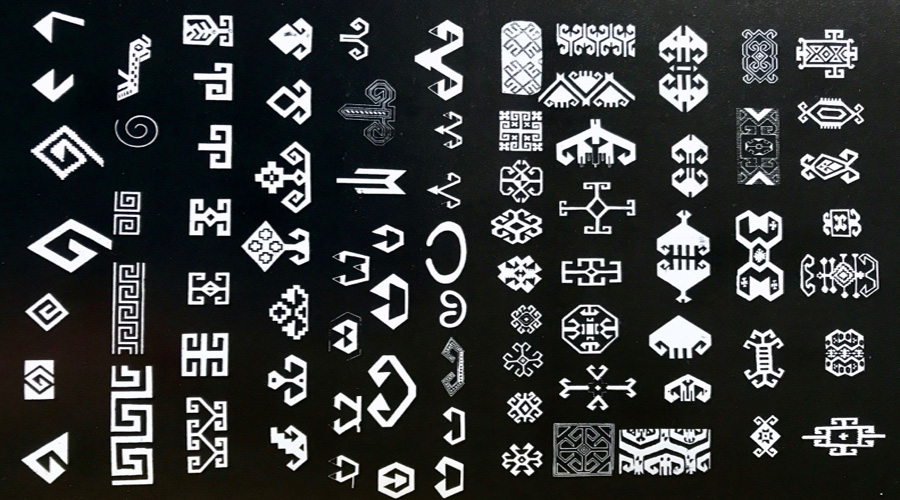
Where To Find Traditional Turkish Carpets?
If you want to see or buy these magnificent carpets, you can visit historical bazaars such as the Grand Bazaar in Istanbul and Kemeraltı Bazaar in Izmir and decide accordingly. Turkish carpets and Turkish Rugs are calling you in both the Grand Bazaar and the Kemeraltı Bazaar!
If you can not visit these places, you can order high-quality and best Turkish Carpets and Rugs on our website.
If you want to read our articles about the bazaars, you may find them in our blog also.